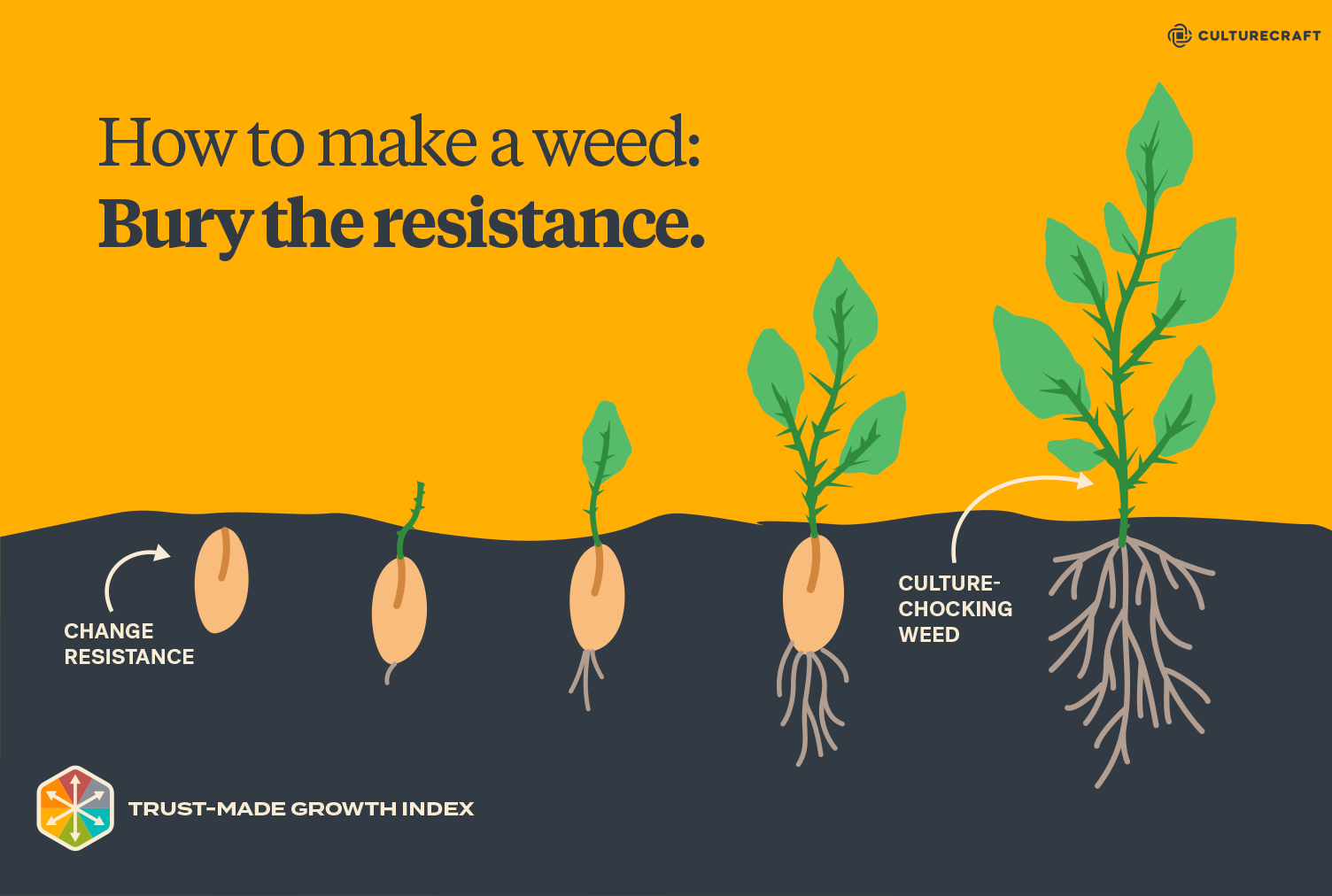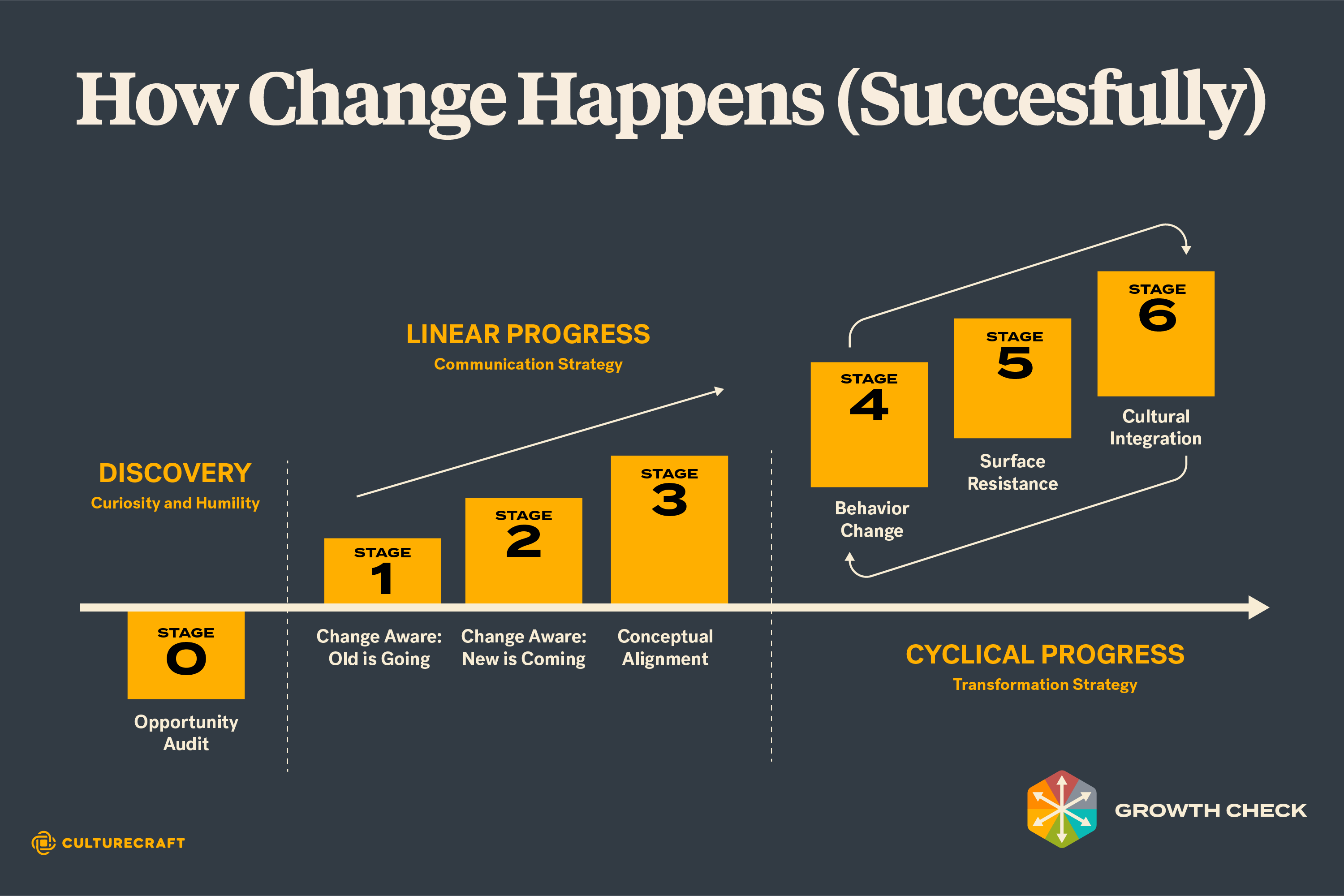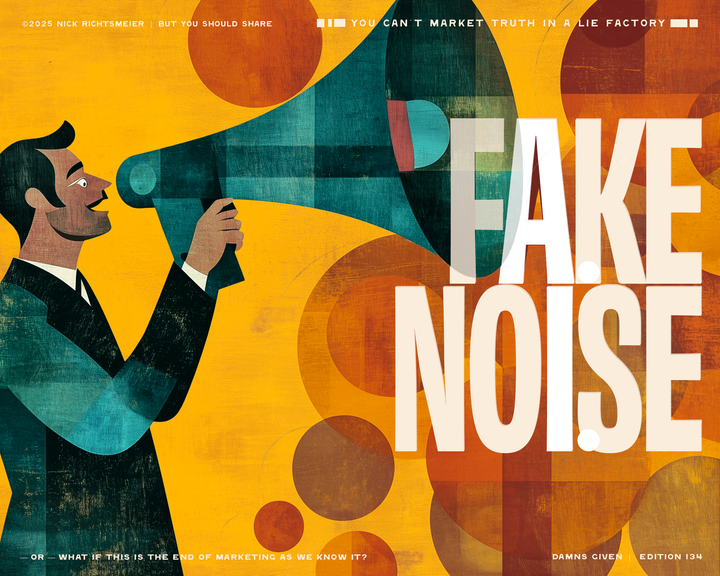Who wants this to fail?
Growth is change. And everyone of us has reasons to fight change. The magic of growing your venture is knowing in advance where the fight is, and how to care for people through the process.

We as leaders consistently underestimate how hard change is. Even those of us who “love change” have subtle and ingrained resistance that keeps us hugging the anchors of the status quo. To make matters more challenging, growth is change... meaning all efforts to take your business to the next level trigger that natural human change resistance. Understanding how business transformation works is required knowledge in your organization.
For today's newsletter, I want to take you through the training that we use for our most important and comprehensive growth
That structural change will produce:
- Emotional resistance - People who don’t feel good about this new growth but often can’t tell you why.
- Intellectual rejection - People whose mental maps don’t have a “spot” to put this new idea and so therefore believe it can’t work.
- Power rebalance - No org wants to talk about power. It smells of politics and triggers defensiveness. But, in reality, power is not equally distributed in an organization. Over time it finds equilibrium. Any change you make to how you grow the business shifts that equilibrium, and people’s fears of losing power are going to get triggered.
This is all very normal.
If you get nothing else out of this week’s newsletter, know that resistance is part of change. The above list is the product of human nature. We all take time, grace, and attention to be able to expand our views and activities to embrace the new.
But normalcy is not a license for apathy. “This will all boil over and people will get used it,” is fool’s logic. Points for optimism, sure, but if you as a leader are not creating space for the so-called “negative” reactions to change, you’re encouraging your team members to go underground, bury their concerns and thoughts.
When you bury a strongly held thought or feeling, it germinates, grows and spreads creating much greater havoc than if you’d addressed it at the point of awareness.

Change, new growth, new perspective (all things your organization needs) requires energy. Energy that flows to enact the change, of course, but more importantly energy to create space to identify and manage resistance, to help people through the process of change.
No matter what growth initiative you are driving, a small part of everyone questions THIS CHANGE, even you, the one driving it. But there are a few people in the firm who have a lot riding on it failing, and perhaps below their awareness, they’d be happy to see it fail. Here’s how we help you through that.
The Stages of Change
When we move the growth needle at our client firms, we take each project through the seven stages of change.

GROWTH CHECK:
(Pre-work stage that usually gets ignored, thus “Zero”. This stage requires a curiosity and humility skillset due to the essential information hiding under cultural norms and ego defensiveness.)
Stage 0: Audit the Opportunity and the Risk: We call this zero, because it’s required to get to Step 1, but happens fairly invisibility. While agencies are vending a series of commoditized tactics in search of ROI, you have to make strategic decisions about where energy that defines growth is going and what’s stopping it. Without this audit stage, you’re working in the blind, shrouded by the BAU (business-as-usual) hum of your venture, and unable to see where change would not only produce opportunity, but will shuffle dynamics, release energy AND resistance.
LINEAR PROGRESSION:
(Stages people move through like steps, one after the other. These stages require a highly skilled communication skillset.)
Stage 1: Change Aware: The Old is Going Away: The results of Stage 0 should be effectively deployed to bring everyone affected to a base level of change awareness: the old is going away. At this point, you will not have a perfect map of what the new is. This will trigger some fear and some questions, but that is what you want. And if your audit was done well, you’ll foresee at least some of the places its coming from.
Stage 2: Change Aware: The New is Coming: Generally Stages 1 & 2 are delivered together throughout your change management plan. But we separate them in our change planning, because a subset of your team will get stuck at 1, even though they know 2 is happening. Their response (see above list) to 1 was strong enough that they zoned out when you explained 2, and their progress through Change is stuck at “You’re taking away what we know.”
Stage 3: Conceptual Alignment: An early framework for where your growth changes are taking the firm should come next. It needs to be delivered globally so that there is a shared vocabulary and then customized particularly where the resistance is the strongest (though perhaps not the most public). Remember that you have 1-3 leaders who subconsciously (or in rare cases consciously) would really be a lot happier if this didn’t happen. You’ve got to have a plan of engagement to take that group in particular through all seven stages.
CYCLICAL PROGRESS:
(Stages that people move through in a spiral, revisiting each several times, slowly moving toward full adption. These stages can't rely on communication; they require a transformation management skillset.)
Stage 4: Behavioral Change: Its almost impossible for people to change their ideas without changing their behavior. Moving bodies change minds. So if you want broad acceptance of your new growth strategies (which you should!) then you have to make out the actual behavioral changes you want and then build training and “reheasal” venues for people to make those changes. It costs nothing for a team member to say, “I get it, good idea,” and then go about their day letting their resistance move the change into the background. Every impacted team member needs an adoption plan.
Stage 5: Surfacing and addressing Resistance: NOW the fun begins. Once we ask people to move their bodies, change their behavior, alter their rhythms (not just their words), then the real resistance kicks in. Because our fundamental resistance to change isn’t mental its embodied in our nervous system and our physical habits, changing those habits releases the real fight. Having a plan for welcoming, hearing, and diffusing this resistance is essential to any true growth change plan.
Stage 6: Cultural Integration: In the game of change, what we really want is a new normal. That new normal requires an upgraded culture: habits, language, priorities, behaviors. Culture doesn’t change in leaps, so you’ll get some early Stage 6 success and then need to cycle back to Stage 4 and repeat over and over until the culture (not the words or the ideas) behaves on its own the way you want it to without ongoing pressure.
Organizations succeed in scaling through various stages because energy flows to the right places. The catalyst for energy flow in an organization is trust, and the wiring for trust is culture. Any time you make change, you alter the wiring (hopefully in good ways) to get the right energy to the right projects.
Your first job is to audit the energy flow. Do Step Zero. Below I talk a little bit about how that’s done:
What is Step Zero to scaling your organization? Where do you begin?



